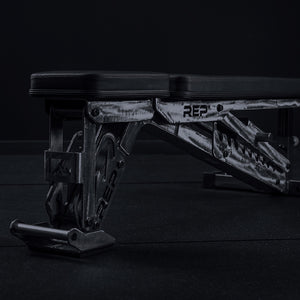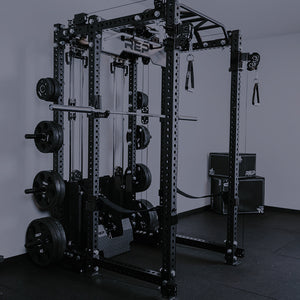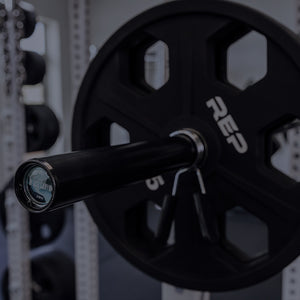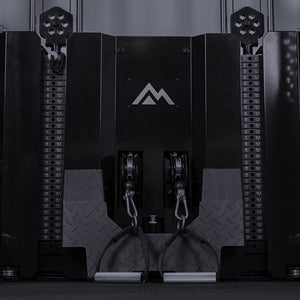
Want to isolate your shoulders and force them to grow? Want to build those big, round shoulder caps that tighten T-shirts and help make your waist look smaller? Want to strengthen your ability to lift things from your sides like the scales of Lady Justice? If your answer is yes, dumbbell lateral raises are an absolute must in your shoulder routine.
What are dumbbell lateral raises?
Dumbbell lateral raises are the simple motion of lifting dumbbells with extended arms from your hip level to the top of your arm’s range of motion. They are not an overly complicated exercise, but within their simplicity, there are a few different exercises to pull from them, along with different muscles to be worked.
What muscles do dumbbell lateral raises work?
Dumbbell lateral raises work your shoulders (deltoids), which are comprised of three separate muscles. Depending on what kind of dumbbell lateral raise you perform, one of those three deltoids will be isolated.
So, firstly, let’s identify the three heads of your shoulders so you can sculpt with intent.
- Anterior deltoid: This is the front head of your shoulder connected to your chest (pectoralis major), which lifts your arm up in front of your body.
- Medial deltoid: This is the middle head of your shoulder, which lifts your arms straight out to your sides.
- Posterior deltoid: This is the rear head of your shoulder connected to your neck and back (trapezius and latissimus), which helps pull your arms backward.
How do I do a dumbbell lateral raise?
A proper dumbbell lateral raise can be done a few different ways to target the aforementioned muscle groups. It’s important to work all three equally to maintain balance.
How to do Dumbbell front lateral raises (anterior deltoids)
- Start with the dumbbells in front of your hips (overhand or underhand).
- Keep your shoulder blades squeezed together.
- Lift extended arms straight up in front of your body as high as they go.
- Control the negative motion downward.
- Wash, rinse, and repeat.
How to do Dumbbell side lateral raises (medial deltoids)
- Start with the dumbbells held neutrally at your sides or in front of your hips.
- Keep your shoulder blades squeezed together.
- Lift extended arms straight out to the sides of your body as high as they can go.
- Control the negative motion downward.
- Wash, rinse, and repeat.
How to do Dumbbell rear lateral raises (posterior deltoids)
- Bend over to 90 degrees.
- Keep your back straight and knees slightly bent.
- Begin with the dumbbells straight down beneath you (overhand or neutral grip).
- Relax your shoulder blades. (This is one of the rare instances when you do not want to pinch your shoulder blades because if they are flexed, your lats will take over and rob your shoulders of the lion’s share. So long as your back is straight and you are using weights you can control without putting too much pressure on your elbows, allow your shoulder blades to relax to isolate your rear delts.)
- Lift extended arms straight out to the sides of your bent-over body as high as they go.
- Control the negative motion downward.
- Wash, rinse, and repeat.
Tips for Dumbbell Lateral Raises
Here is a list of good form details to include with each variation of dumbbell lat raises.
- Don't lock your elbows but maintain a slight bend. You want as close to straight arms as you can without putting unnecessary pressure on your elbow joint.
- Keep your back straight. Don’t wanna have to “take you out to posture.”
- Pause at the bottom of each rep. It doesn’t have to be a long pause, but you want to avoid using momentum to do the lift. Make each rep count without swinging weights around.
- Use a full range of motion. Since this exercise first began making the circuit many moons ago, there have been differing opinions about how high to bring your dumbbells during a lateral raise. Some have said shoulder height. Some have said higher. The most recent studies recommend moving the weight as high as you can while maintaining good form, so long as it doesn't cause pain or discomfort. Capitalize on as much of your range of motion as you can to get all the strength and aesthetic benefites.
- Don’t sway, bounce up on your toes, or use your legs. This may sound like obvious advice for shoulder workouts, but a common cheat we don’t even realize we’re doing while performing dumbbell lateral raises is boosting from our bottom half when we’re running out of steam.
- Don't drop the dumbbells after the last rep but treat the motion as though you are preparing to do another one. That’s where some of the juiciest bits of the fruit are, so squeeze’m out!
How heavy should my dumbbells be for side raises?

When performing dumbbell lateral raises, you don't want to strain yourself like you can with heavier shoulder exercises (think: overhead presses). If you want a heavy shoulder workout, a simple solution is to do your overhead presses first and then move onto lateral raises.
It doesn't take much weight to get an effective workout for front, side, or rear lateral raises, and too heavy of weights makes it far too easy to slip into bad form and possibly tweak or hurt your shoulders. Better to isolate your form and use a weight that challenges you to reach 12-15 reps.
How many reps and sets should I do with side raises?

There are times and circumstances when altering this up or down is okay, but if you are a beginner with dumbbell lateral raises, a simple and safe approach is doing 3-4 sets of 12-15 reps of each of the exercise. This will give you a good burn and increase strength on all three heads of your shoulders while still making it manageable to maintain good form.
Overall, dumbbell lateral raises are a key component to bigger and stronger shoulders. By addressing all three of the heads, you will sculpt some beautiful, round caps!
3 Dumbbell Lateral Raise Alternatives
Not feeling the dumbbells? Here are three effective alternatives to dumbbell lateral raises.
1. Cable lateral raises
2. Resistance band lateral raises
3. Kettlebell lateral raises
Learn More About Strength-Training Your Upper Body
Transform Your Upper Body: 1-Hour Push Workout on the Ares™ 2.0 Cable Machine
The Importance of an Incline Bench in Your Workout Routine
Jeremiah Sanchez is a Colorado-based personal trainer with more than a decade of training experience. He specializes in strength training, weight loss, rehabilitation, and pre- and postpartum fitness.
This article was reviewed by Ashley Boyer, CPT, for accuracy.
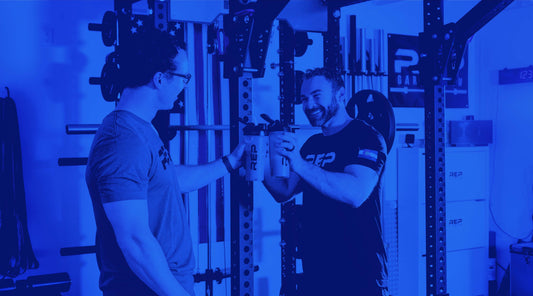
NEWSLETTER SIGNUP
Product launch information, promotions, blogs, and REP news.

